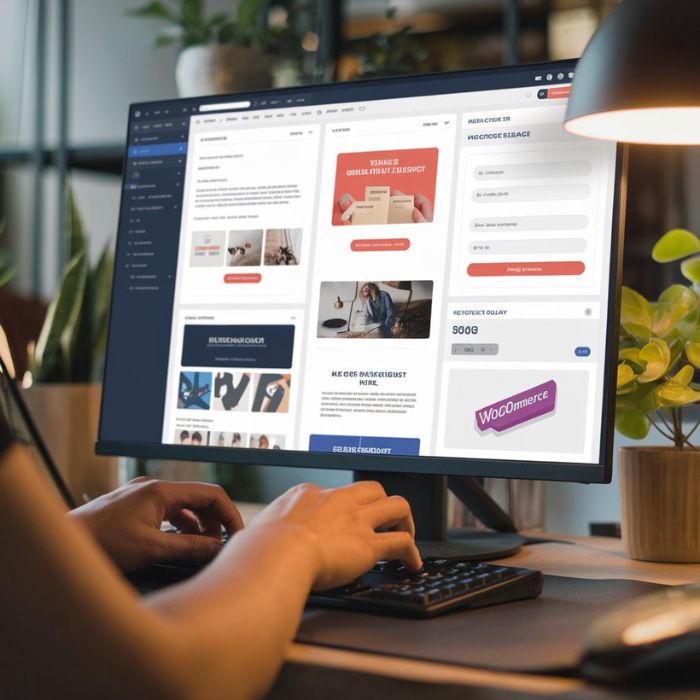Overview of WordPress Page Layouts
If you’re looking to give your WordPress site a fresh and polished look, consider the power of boxed layouts. These designs bring structure and focus, allowing your content to shine within defined boundaries. Whether you’re creating a blog, portfolio, or business website, choosing the right layout can make all the difference in user experience.
Boxed layouts are not just visually appealing; they also help guide visitors’ eyes towards important elements on your page. With a myriad of options available for customization, finding that perfect width can elevate your design game to new heights. Let’s dive into what makes boxed WordPress page layouts so effective and how you can harness their potential for your own site.
Benefits of Using a Box Layout
A boxed layout offers a distinct visual appeal that can enhance user experience. By confining content within a defined area, it creates an organized and focused presentation. This clarity helps visitors navigate through information more easily.
Another advantage is the ability to emphasize your brand’s personality. A boxed design provides a canvas for creative backgrounds and colors, allowing you to showcase your unique style effectively.
Boxed layouts also improve readability. Text and images are less likely to be lost amid distractions when they’re neatly contained. This setup encourages users to engage with your content longer.
Responsiveness is another strong point of WordPress page layouts. They adapt well across different devices while maintaining their structure, ensuring consistent experiences whether on mobile or desktop screens.
Implementing whitespace becomes simpler in a boxed layout. It allows elements room to breathe, enhancing overall aesthetics without overwhelming viewers with cluttered visuals.
Choosing the Right Width for Your Website
Choosing the right width for your box layout is crucial. It impacts both aesthetics and usability.
First, consider your audience’s devices. With mobile users on the rise, a responsive design is non-negotiable. Aim for a flexible width that adapts seamlessly across screens.
Next, think about content type. Text-heavy sites may benefit from narrower widths to enhance readability. Visual-centric websites can stretch wider to showcase images effectively.
Test different widths during development. Tools like browser resizing or user feedback can offer insights into what works best.
Don’t forget about white space—it’s essential in guiding visitors’ attention and making your site feel less cluttered.
Remember that experimentation is key. Adjusting your layout based on performance metrics will refine the user experience over time.
Examples of Successful Boxed Layout Websites
Several websites effectively utilize boxed layouts to enhance their visual appeal and user experience.
One standout example is the popular photography site, Unsplash. Its clean design showcases stunning images within defined boundaries, allowing visitors to focus on visuals without distractions.
Another excellent case is Medium. The boxed layout emphasizes readability and organization, providing a seamless reading experience for users as they scroll through articles.
E-commerce platforms like Shopify also benefit from box designs. By creating a structured look for product listings, they guide customers’ attention directly to featured items.
WordPress itself offers numerous themes with boxed layouts that attract bloggers and businesses alike. These sites often display content neatly while maintaining an inviting atmosphere for readers.
How to Implement a Boxed Layout on Your WordPress Site
Implementing a boxed layout on your WordPress site can transform its look and feel. Begin by selecting a theme that supports boxed layouts. Many popular themes come with this feature built-in.
Once you’ve installed your theme, navigate to the customization options in your WordPress dashboard. Look for settings related to layout or design; here you’ll typically find an option for choosing between full-width and boxed formats.
You may also want to adjust padding and margins to ensure your content feels balanced within the box. Experiment with background colors or images that complement your brand while keeping readability in mind.
Don’t forget about responsiveness! Test how your box layout appears on different devices to maintain a user-friendly experience across all platforms. If needed, consider using plugins specifically designed for custom layouts if additional flexibility is required.
Common Mistakes to Avoid with Boxed Layouts
One common pitfall is choosing a width that feels cramped or overly wide. It’s essential to find a balance that enhances readability. A boxed layout should invite the reader, not make them squint at tiny text.
Another mistake is neglecting mobile responsiveness. Many users browse on their phones, so ensure your boxed layout adapts seamlessly across devices. Test it out before going live.
Ignoring white space can also detract from the design’s elegance. Adequate spacing around elements improves visual appeal and guides user focus.
Don’t overload your page with excessive content or distracting visuals within the box. Keep it clean and straightforward for an optimal user experience; simplicity often reigns supreme in design choices like these.
Conclusion
Finding the right width for your boxed WordPress layout can transform your website’s look and feel. It shapes user experience and affects how visitors engage with your content.
Experimentation is key. Try different widths to see which resonates best with your audience. Pay attention to readability, visual appeal, and overall functionality.
Remember, it’s not just about aesthetics; it’s also about usability. A well-designed boxed layout enhances navigation and keeps users on your site longer.
Stay attuned to trends, but don’t lose sight of what makes your brand unique. The perfect width balances creativity with clarity.
Keep evolving as you gather feedback from users. Their insights can guide adjustments that improve engagement levels significantly over time.
FAQS
Q1: What is a boxed layout in WordPress?
ANS: A boxed layout confines your website’s content within a defined width. This design creates a frame-like appearance, giving your site a structured and polished look.
Q2: How do I choose the right width for my boxed layout?
ANS: Selecting the ideal width depends on your target audience and type of content. Aim for readability and accessibility. A common range is between 900 to 1200 pixels, but always consider mobile users too.
Q3: Are there any plugins to help with implementing a boxed layout?
ANS: Yes, many themes come with built-in options for adjusting layouts. Additionally, plugins such as Elementor or WPBakery can assist you in customizing your site’s appearance without needing code knowledge.
Q4: Can I switch from a full-width to a boxed layout easily?
ANS: Absolutely! Most modern WordPress themes allow easy switching between layouts. You may need to adjust some settings or CSS styles afterward for optimal results.
Q5: What are some common mistakes when using boxed layouts?
ANS: Avoid overly narrow widths that make reading difficult. Also, don’t neglect mobile optimization; ensure your design looks good on all devices. Overloading the box with too much content can also detract from user experience.
Q6: Is it possible to maintain flexibility while using a boxed layout?
ANS: Definitely! By allowing certain elements like images or videos to extend beyond the box, you can create visual interest without compromising structure. Just remember, balance is key!











